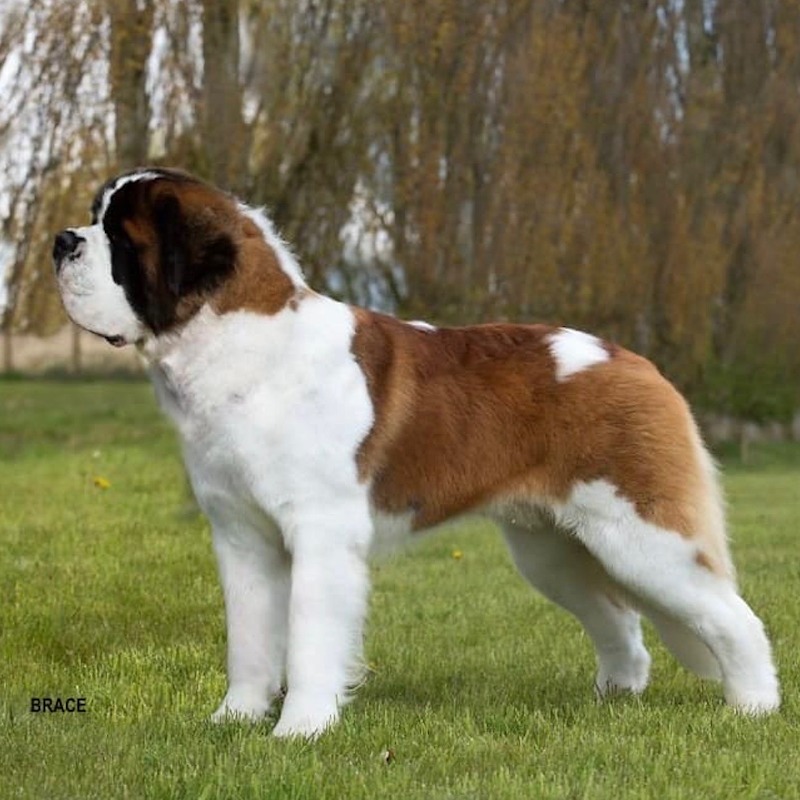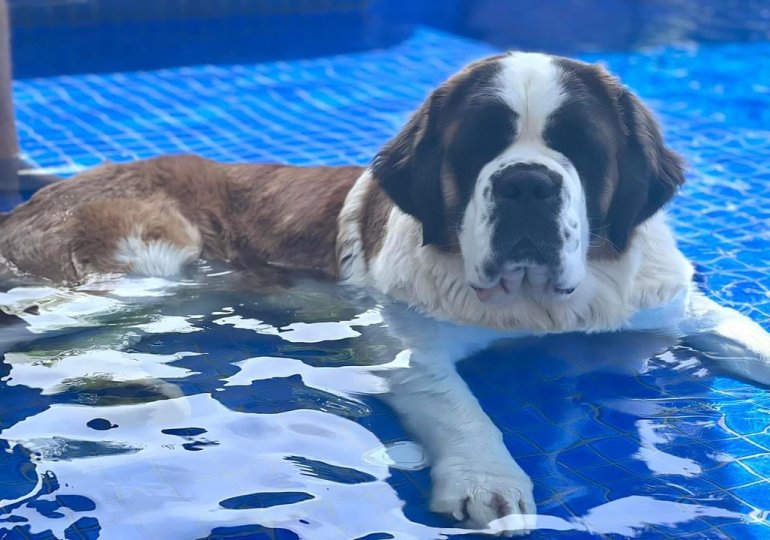Breeds
St Bernard

GROUP 6 - UTILITY
Brief History
The St. Bernard was originally bred for rescue work by the hospice of the Great St. Bernard Pass on the Italian and Swiss border. The monks acquired their first St. Bernard between 1660 and 1670 for watchdogs and companions. The dogs had a great sense of smell and were soon used to help search for lost travellers.
Average Life Span
When considering a dog, please realise that you are taking it on for its lifetime.
The average life span is 8 to 10 years.
Temperament
The St. Bernard is calm, patient, loyal and affectionate.
General Breed Description
The St. Bernard is a very large, powerful, muscular dog with an impressive head. They have two coat varieties, short haired and long haired. Both varieties have plenty of undercoat. The colours are red and white, either splash coated (white with small or large patches of red) or mantled (an unbroken red/brown mantle covering most of the dog with white surrounds).
Coat and Care Requirements
They have two coat varieties, and both have plenty of undercoat. They require regular grooming, a good brush and comb at least once a week. Bathing is recommended when necessary.
Size
Height: Males 70 to 90cms (27.5 to 35.5ins), Females 65 to 80cms. (25.5 to 31.5ins).
Health
All breeds have individual health issues. When speaking to breeders it is recommended you enquire about breed’s health and what health testing the breeder does. The St. Bernard is generally a healthy breed, however health conditions do occur occasionally. These may include Hip Dysplasia (HD), Elbow Dysplasia (ED), Gastric Torsion (Bloat), Entropion and Ectropion (eye conditions).
Suitability
The St. Bernard is a gentle giant who is suitable for most people, but you must remember they are an incredibly strong breed and needs to be trained from an early age. They are an idea family pet but due to his large size it is best to be supervised when playing as they can knock you over. The St. Bernard should be socialised with people and other dogs from early puppy stage. He likes to be with his family, so is quite comfortable indoors.
In Conclusion
Now you know a little more about this breed. If you have decided this is the dog for you and wish to investigate further, please contact the Breed Club or Dogs Victoria. They will be able to give you information about available puppies and also suggest dog events where you can see the breed and speak to breeders. In this way you will gain a better perspective of the breed and its needs. With any breed of dog, it is important to research and determine suitability for your lifestyle before committing to a puppy which will be a part of your family for many years to come.
Whilst many breeds are recommended for families, it is imperative that when children are with dogs they are supervised at all times. Basic obedience training is a vital part of dog ownership.
Dogs Victoria is about the responsible ownership of all dogs and in particular the preservation of pure breeds.
Link to Dogs Australia Breed Standard: https://dogsaustralia.org.au/breed/detail/192
Breeders



